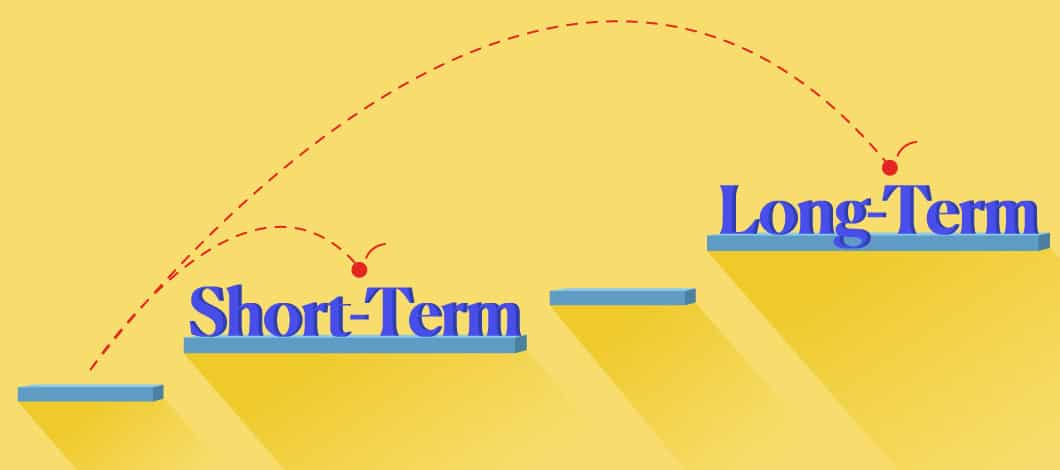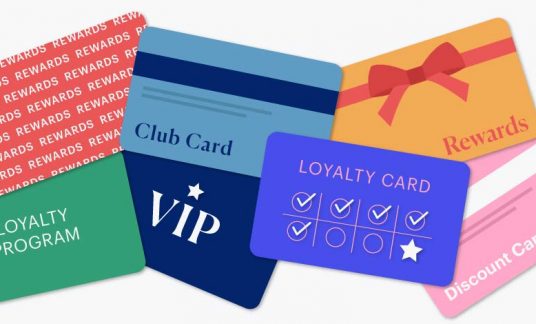SMART business goals create the roadmap you need to turn your overarching dreams for your company into reality.
Here’s what you need to know about SMART goal setting, including sample SMART goals to help you structure your own trackable targets to help you and your small business succeed.
What Are SMART Goals?
SMART — which stands for Specific, Measurable, Attainable, Relevant and Time-bound — goals set the parameters for actions you and your staff take to improve personal performance and your small business’s overall progress. SMART business goals break down broad objectives into well-defined, attainable milestones to ensure success.
Why Set SMART Goals?
SMART goal-setting is an effective way to help refine your ideas, clarify your objectives, focus your efforts and productively allocate your resources. It also helps promote transparency and accountability throughout your company so employees can be empowered to prioritize their efforts and resources toward accomplishing common goals.
-
SMART Business Goals’ 5 Elements
Specific: Your goal should be well-defined and focus on a particular outcome. For example, instead of saying, “we want to increase sales,” it should state, “we aim to increase sales by 80% in the XYZ market.”
It should describe an observable action, behavior or result and use quantitative values (e.g., a number, amount or percentage) to measure success.
Measurable: Each SMART goal should have a starting point and a finishing point that can be quantified and tracked. Besides the key metrics, you should indicate a system, method and procedure used to measure progress.
Attainable: This criterion prompts you to take stock of timeline, budget and resource availability (e.g., talent), and even industry averages so you can evaluate how — and if — a goal can be realistically achieved.
The “A” in SMART goal also can stand for “acceptable.” It refers to getting buy-in from everyone involved, so you can rally employees behind a common objective and motivate them to take the initiative.
Relevant: A goal needs to be relevant to your business. For example, short-term goals should align with the overarching vision for your business.
Your goal also should address market conditions and the realities of the business climate. For instance, a goal might not be relevant if you’re trying to increase your sales by 50% in an economic downturn.
Time-Bound: Your goal should have a clear start date and end date representing a duration that matches the scope and resources available.
SMART Goals Examples for Work
Consider applying SMART goals to several aspects of running your small business, including leadership, management and employee performance. Here are some SMART business goals examples of setting meaningful SMART goals that’ll help you achieve tangible results:
SMART Goals Examples for Employees
General Goal: Improve Customer Service Quality
Specific: Improve the quality of customer service to achieve a 90% customer satisfaction rating on accuracy, timeliness and courtesy measures in 6 months.
Measurable: Achieve a 90% customer satisfaction rating
Attainable: Provide training sessions to ensure all employees understand expectations and are prepared to execute proper procedures. Ensure we have standards in place to assess customer satisfaction. Customer complaints will be reviewed, and corrective action will be taken where necessary.
Relevant: Excellent customer service is key to maintaining and growing our customer base.
Time-Bound: We’ll see results after 6 months
General Goal: Increase Blog Traffic
Specific: Increase blog traffic by 200% using search engine optimization (SEO) and email marketing strategies. The web team will monitor blog stats and provide a weekly report to help fine-tune the tactics. Work will begin on [XX date], and the goal is expected to be achieved by [XX date].
Measurable: Blog traffic will increase by 200%; this will be determined by reviewing and interpreting blog stats
Attainable: We’ll use SEO and email marketing tactics to improve blog traffic.
Relevant: Robust blog traffic will expose our work to a larger audience and help establish us as an authority in our industry. We’ve also seen a healthy conversion rate from blog readers to paying customers.
Time-Bound: We’ll achieve our goal by [XX date].
SMART Goals Examples for Managers and Leadership
Managers need to set SMART business goals that aim to improve their performance and the performance of team members. Remember that it’s important to be a leader as well as a manager. Objectives for developing leadership capabilities include:
- Honing communication skills
- The ability to inspire and motivate others
- Assessing situations and making decisions
- Critical thinking and problem-solving skills
- The ability to work with a team
General Goal: Improve Communication Clarity
Specific: Develop presentation skills and improve the clarity of my communication to reduce the number of questions in team meetings by 30% in 6 months. This will reduce the time spent on answering questions and minimize misunderstandings to improve the team’s productivity.
Measurable: Questions in team meetings will be reduced by 30%
Attainable: Take training courses to improve presentation skills. Assess previous Q&A sessions to assess where the confusion arises. Solicit feedback from fellow managers or staffers regarding communication clarity.
Relevant: Clarifying communications and reducing the amount of questions employees need to ask will cut back on misunderstandings and potential errors. Less time devoted to questions can also improve staff productivity.
Time-Bound: Changes will be implemented in 6 months.
General Goal: Improve Management and Coaching Skills
Specific: Develop management and coaching skills by having weekly 1-on-1 meetings with direct reports and quarterly 1-on-1 meetings with indirect reports to achieve a 10% improvement in employee engagement in 6 months.
Measurable: 10% improvement in employee engagement
Attainable: I’ll host weekly 1-on-1 meetings with direct reports and quarterly meetings with indirect reports.
Relevant: Better management and coaching skills will lead to greater employee engagement, leading to higher productivity and staff morale.
Time-Bound: We should see an improvement in 6 months
SMART Performance Goals Examples
These SMART business goals can guide employee performance reviews to help workers focus on improving areas most relevant to their professional development and business objectives. Some of these goals focus on meeting specific performance metrics, while others revolve around acquiring professional knowledge and updating relevant skills.
General Goal: Grow Engagement on Business’s Social Media Accounts
Specific: Take an online course on social media marketing and apply the tactics to Facebook and Instagram to increase reach and engagement by 25% in 6 months.
Measurable: Reach and engagement will grow by 25%
Attainable: Take an online course and implement the lessons in my business’s social media strategy. Track account metrics to help chart progress and adjust strategy when necessary.
Relevant: Social media is a key part of our overall marketing strategy.
Time-Bound: Reach and engagement will be up in 6 months.
General Goal: Improve Cost Efficiency In the Procurement Process
Specific: Spend 2 days each month shadowing operation and sales teams to gain customer insights, which will be applied to the procurement process to improve cost efficiency by 10% in 8 months.
Measurable: Improve procurement’s cost efficiency by 10%
Attainable: Devote 2 days per month to shadowing the operation and sales teams to gain customer insights. Apply insights to the procurement process.
Relevance: Identifying customer needs and keeping costs manageable are important pieces to the procurement/sourcing strategy.
Time-Bound: Efficiency will be in effect in 8 months.
SMART Goals Examples for Small Business
Small businesses operate differently than large corporations and require setting SMART goals with a level of granularity that allows you to stay focused on results without losing sight of the big picture.
General Goal: Gain New Clients
Specific: Gain 4 new clients this quarter, each with a monthly retainer fee of $2,000. This will be achieved by repackaging my services, increasing my fees, improving my lead-generation efforts so I can have 3 or more sales conversations each week and build a pipeline of high-quality prospects.
Measurable: Add 4 clients during the current quarter. Each client will have a $2,000 monthly retainer fee. Hold at least 3 sales conversations per week.
Attainable: Repackage services, improve lead generation efforts and increase fees to attain more clients at a particular retainer threshold.
Relevant: Growing our client base can net greater profits and set the company on the path to potential future success.
Time-Bound: End of the fiscal quarter
General Goal: Add Customers and Grow Profits
Specific: Acquire 10,000 new online customers using pay-per-click ads at an average cost-per-acquisition of $25 with an average profit of $10 by the end of the year.
Measurable: Gain 10,000 customers; utilize pay-per-click ads with an average cost-per-acquisition at $25; gain average profit of $10 per customer.
Attainable: Launch an online ad campaign to entice new e-commerce customers. Employ pay-per-click ads to appeal to potential buyers.
Relevant: Gaining new customers can increase online store traffic and grow revenue. We can also launch efforts to retain new customers.
Time-Bound: The end of the year

Long- and Short-Term SMART Goals
While it’s essential to have a long-term vision to guide the growth of your business, you also need short-term milestones to help you stay on track. You can set SMART business goals for both.
Long-Term SMART Goals Example
General Goal: Become an Industry Leader
Specific: Become the industry leader by launching 5 innovative products that will reach $1 million in sales each within 3 years.
Measurable: Launch 5 products and make $1 million in sales
Attainable: Apply additional resources to research and development to develop innovative products. Develop a plan if any changes are needed in production and distribution processes. Also, create a marketing plan to ensure sales.
Relevant: An innovative product line can propel our business to a prominent spot in the industry. Industry leadership will set us apart from competitors and capture a greater portion of the market share.
Time-Bound: 3 years, at the most
Short-Term SMART Goals Example
General Goal: Increase Productivity and Improve Scalability
Specific: Implement business workflow automation to increase productivity by 25% in 3 months while improving the company’s scalability for expansion.
Measurable: 25% increase in productivity
Attainable: Purchase necessary equipment and ensure employees are trained with new technology and methodology. Implement automated processes.
Relevant: Increasing productivity and positioning the company for future expansion can help the business stay competitive in an evolving industry and marketplace.
Time-Bound: Achieve goals in 3 months
Crafting Your Own SMART Business Goals
A person who writes down goals is 1.4 times more likely to achieve those goals, according to the study “The Gender Gap and Goal Setting.” Transcribing your SMART business goals is a good start to envisioning the specific steps you and your team need to take to attain financial or performance success.
Before you commit anything to a document, be sure to meet with your company’s stakeholders and discuss your plans and incorporate valuable feedback into your long- and short-term SMART goals.
Aside from including the 5 elements, there are no absolute rules to composing your SMART goals. You can use whatever physical or digital tools you prefer, and plans can be as brief or detailed as necessary.
If you find you need a bit of inspiration or guidance as you begin work, you can look at our SMART goals examples for work or download a Word template for SMART goals from Smartsheet.











